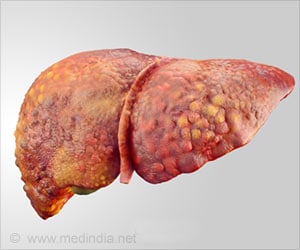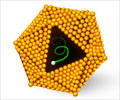Deleting the protein HNF6 which activates protein transcription, in liver cells of adult transgenic mice leads to fatty liver syndrome.

‘Loss of HNF6 affects another regulatory protein in the nucleus called Rev-erb-alpha, which also lifts the brakes off the production of fats, thereby also leading to a liver full of fat-filled cells.’





"We showed that simply deleting the protein HNF6 in liver cells of adult transgenic mice fed normal laboratory chow leads to fatty liver syndrome," said senior author Mitchell Lazar, MD, PhD, director of the Institute Diabetes, Obesity, and Metabolism. "Although HNF6 is known mainly as an activator of protein transcription, loss of it upregulates many lipid-producing genes." This loss of HNF6 affects another regulatory protein in the nucleus called Rev-erb-alpha, which also lifts the brakes off the production of fats, thereby also leading to a liver full of fat-filled cells. "When we took HFN6 out the liver, Rev-erb-alpha didn't know how to get to many of the places that it usually goes to in the liver cell genome," Lazar said.
Many of these lipid-producing genes are targets of Rev-erb-alpha, which plays a central role in coupling metabolism to the circadian clock, and binding of Rev-erb-alpha at these sites was lost when HNF6 was made inactive in liver cells. Normally, HNF6 delivers Rev-erb-alpha to parts of the genome it doesn't find on its own. If HNF6 is gone, Rev-erb-alpha's gene inactivation function is turned off - essentially suppressing a repressor. In this way HNF6 and Rev-erb together regulate aspects of liver lipid metabolism, but they also each independently affect other sets of genes in the liver and other tissues.
Lazar likens this control of normal liver physiology over a 24-hour cycle to the building game Jenga. "We are still trying to figure out which blocks are needed and which ones are not needed to keep the tower, or healthy liver, standing, as it were," he said. "If we take out the 'blocks' Rev-erb-alpha or HNF6 from the liver 'tower,' what happens? What this study tells us is that these two blocks are co-dependent in some situations."
Rev-erb-alpha governs the daily cycle of many genes that play a role in maintaining normal metabolic cycles in many tissues. An integrated view of normal metabolism is important to be able to see what happens during abnormal metabolism in order to know how to maintain healthy pathways and at the same time how to fix the ones that have gone awry.
Advertisement















